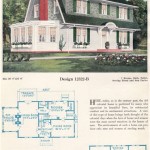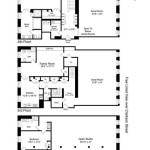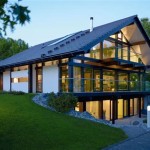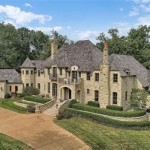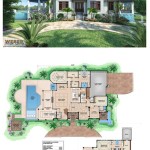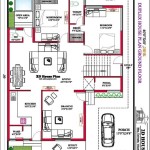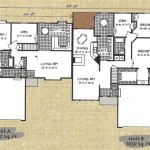Club House Plan: A Comprehensive Guide
A clubhouse serves as a central hub for various communities, offering a place for social gatherings, recreational activities, and administrative tasks. Developing a comprehensive clubhouse plan is crucial for ensuring its successful operation and longevity. This involves careful consideration of various factors, from initial conceptualization to ongoing maintenance.
Key Considerations in Clubhouse Planning
Developing a robust clubhouse plan requires meticulous attention to detail and a thorough understanding of the community's needs. This involves several key considerations:
- Purpose and Objectives: Clearly define the intended purpose of the clubhouse and the specific objectives it aims to achieve. This will guide decision-making throughout the planning process.
- Target Audience: Identify the primary users of the clubhouse. Understanding their demographics, interests, and needs is essential for designing appropriate spaces and amenities.
- Budget and Funding: Establish a realistic budget for the project, considering construction costs, operating expenses, and potential funding sources.
- Location and Accessibility: Choose a convenient and accessible location for the clubhouse, considering factors such as proximity to transportation, parking availability, and surrounding amenities.
- Legal and Regulatory Requirements: Ensure compliance with all relevant building codes, zoning regulations, and accessibility standards.
Space Planning and Design
Effective space planning is critical for maximizing functionality and creating a welcoming environment. Careful consideration should be given to the following:
- Functional Areas: Determine the necessary spaces within the clubhouse, such as meeting rooms, recreational areas, kitchen facilities, and administrative offices.
- Layout and Flow: Create a logical and efficient layout that facilitates smooth traffic flow and maximizes the use of space.
- Aesthetics and Ambiance: Consider the overall aesthetic appeal of the clubhouse, incorporating design elements that reflect the community's character and create a comfortable atmosphere.
- Accessibility: Ensure that all areas of the clubhouse are accessible to individuals with disabilities, adhering to relevant accessibility guidelines.
- Sustainability: Incorporate sustainable design principles to minimize environmental impact and reduce operating costs.
Amenities and Features
The selection of amenities and features will significantly impact the clubhouse's appeal and functionality. Consider the following:
- Recreational Facilities: Determine which recreational facilities are most appropriate for the target audience, such as a fitness center, swimming pool, or game room.
- Meeting and Event Spaces: Provide flexible spaces that can accommodate a variety of events and gatherings, including meetings, parties, and conferences.
- Technology and Communication: Equip the clubhouse with modern technology and communication infrastructure, such as Wi-Fi, audio-visual equipment, and security systems.
- Outdoor Spaces: Utilize outdoor areas effectively, creating patios, gardens, or recreational spaces that enhance the overall experience.
Construction and Project Management
Successful construction requires meticulous planning and effective project management. Key aspects to consider include:
- Contractor Selection: Choose a reputable and experienced contractor with a proven track record in clubhouse construction.
- Construction Timeline: Develop a realistic construction timeline and monitor progress closely to ensure adherence to deadlines.
- Quality Control: Implement rigorous quality control measures throughout the construction process to ensure that the finished product meets the required standards.
- Budget Management: Track expenses carefully and manage the budget effectively to avoid cost overruns.
Operations and Maintenance
A well-defined operational plan is essential for the smooth running of the clubhouse. Key components include:
- Staffing and Management: Determine staffing needs and establish clear roles and responsibilities for clubhouse personnel.
- Membership Management: Implement a system for managing memberships, including applications, renewals, and communication with members.
- Financial Management: Develop a budget for operating expenses and implement procedures for tracking income and expenditures.
- Maintenance and Repairs: Establish a preventative maintenance program to ensure the long-term functionality and upkeep of the clubhouse facilities.
- Security and Safety: Implement security measures to ensure the safety and well-being of clubhouse members and staff.
- Rules and Regulations: Establish clear rules and regulations for clubhouse usage to maintain order and ensure a positive experience for all members.
Community Engagement
Engaging the community throughout the planning and operational phases is crucial for ensuring the clubhouse's success. Key strategies include:
- Needs Assessment: Conduct a thorough needs assessment to understand the community's preferences and priorities regarding clubhouse features and programs.
- Feedback and Input: Solicit feedback from community members throughout the planning process to ensure that the clubhouse meets their needs.
- Communication and Outreach: Maintain open communication with the community, providing regular updates on the clubhouse's progress and activities.
- Programming and Events: Develop a diverse range of programs and events that cater to the interests of the community.
Financial Planning and Sustainability
Ensuring the long-term financial sustainability of the clubhouse requires careful planning and management. Key elements include:
- Revenue Generation: Explore various revenue generation strategies, such as membership fees, event rentals, and sponsorships.
- Cost Control: Implement cost-saving measures to minimize operating expenses and maximize resource utilization.
- Long-Term Financial Planning: Develop a long-term financial plan that considers future maintenance needs, capital improvements, and potential expansion.

Lake Community Pool Clubhouses Designs Yahoo Image Search Results Clubhouse Design House Plans

51 Clubhouse Ideas How To Plan Floor Plans Club House

Community Clubhouses Design Plans Yahoo Image Search Results Clubhouse Club House How To Plan

The Club House Design Architecture

Welcome To The Sawgrass Club House Building Happiness

Clubhouse Plan Design Club House Architecture Presentation Board

Floor Plan West Isle Club House Apartment Design Angle Text Png Pngwing

51 Clubhouse Ideas How To Plan Floor Plans Club House

Conceptual Design For A Villa Club House Garden Land8

Club House Site Plan And Architecture Design Dwg File Cadbull

